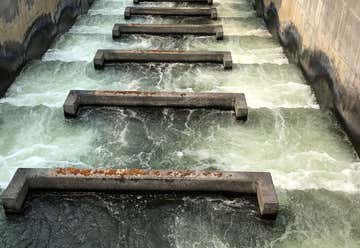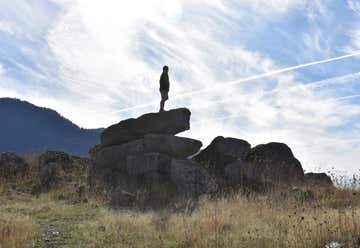Written by Marguerite Cleveland
The Columbia River Gorge National Scenic Area is so gorgeous that in 1986, Congress passed a bill to protect it, making it the second expanse to be designated as a U.S. National Scenic Area (eastern California’s Mono Basin was the first). The Columbia River flows through the gorge between Washington and Oregon and features lush forests, waterfalls, and high desert terrain. Come for the stunning scenery but stay long enough to explore the area’s museums, bridges, and wineries, plus a replica of Stonehenge dedicated to Washington veterans of World War I.
The epic, mile-long hike to the top of Beacon Rock provides the best views of the Columbia River Gorge on the Washington side. Despite the 848-foot change in elevation, this is the perfect beginner hike, comprising 52 gradual switchbacks—worth it for the stunning views from the top. Lewis and Clark gave Beacon Rock its name after camping here on their journey to the Pacific in 1805 and on their return trip a year later. The Doetsch Day Use Area has picnic tables and a 1-mile, ADA-accessible, interpretive trail.
The Bonneville Dam is a National Historic Landmark and a fascinating place to visit. Start at the Visitor Orientation Building to see exhibits on electricity and the region’s hydroelectric dams, and to view the generators from 85 feet above the powerhouse floor. Tours of the powerhouse are offered daily on a first-come, first-served basis. The Fish Viewing Building features interpretive exhibits about the importance of salmon. Don’t miss the fish ladder, which allows fish to swim upstream and bypass the dam. During the salmon run, volunteers count the fish as they pass by the large windows.
The Fort Cascades National Historic Site is located next to the Bonneville Dam. Pick up a brochure for a self-guided, 1.5-mile loop hike at the trailhead. Interpretive signs and larger items found during archaeological excavations are displayed along the hike. The best place to take photos of the dam is from the Wauna Point and Wauna Viewpoint.
The Maryhill Winery is perched on a bluff overlooking the Columbia River, with views of Mount Hood and row upon row of vines. One of Washington’s largest wineries, Maryhill produces more than 80,000 cases a year. On weekends in the summer, enjoy live music on the terrace while sipping a selection from a large variety of classic and reserve wines. The restaurant offers charcuterie, small shareable plates, pizza, and salads. Explore the grounds or enjoy a game of bocce on a tournament-quality court at this family-friendly destination winery.
Open daily from March 15 to November 15, the Maryhill Museum of Art is one of the most fascinating museums in the Pacific Northwest. When it opened in 1940, Time Magazine called it “the world’s most isolated art museum.” Housed in a historic Beaux Arts mansion built by Sam Hill, an eccentric Renaissance man, the 5,300-acre estate overlooks the Columbia River Gorge. Queen Maria of Romania presided over the dedication ceremony and donated more than 100 works of art and personal items to the museum. Hill’s friend Loie Fuller, a modern dancer living in Paris, helped him acquire more than 80 works by French sculptor Auguste Rodin. The grounds include the William and Catherine Dickson Sculpture Park, the Lewis and Clark Overlook, a gift shop, and a cafe.
Three miles east of the museum is the first World War I memorial in the U.S.: a replica of Stonehenge built by Sam Hill and dedicated in 1918 to honor the war casualties from Klickitat County, Washington. Hill thought the ancient Neolithic structure in England was a place of human sacrifice and drew a parallel between the dead of WWI and Stonehenge. He consulted the leading experts of his day in archaeology, astronomy, and engineering to recreate the design and size of the original site. The full-scale replica sits high on a bluff overlooking the Columbia River Gorge, with magnificent views of the Columbia River and Mount Hood. After Hill died in 1931, his ashes were placed in a crypt near his Stonehenge. His epitaph reads: “Samuel Hill: Amid nature’s great unrest, he sought rest.”







